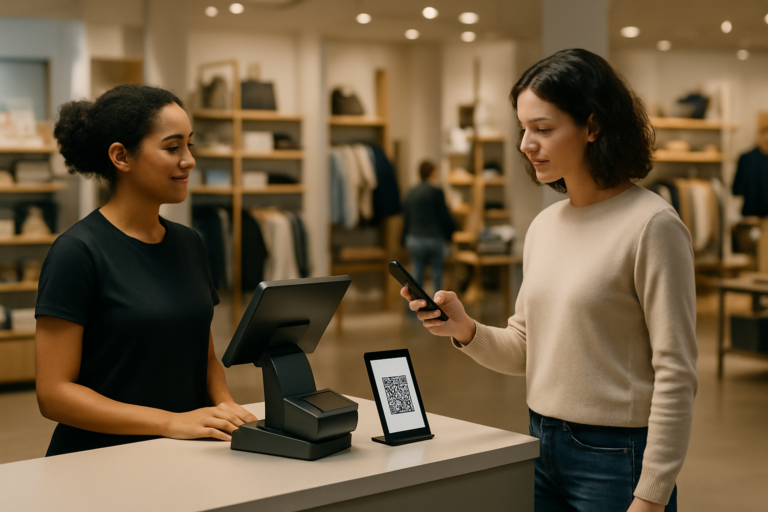Franchise operations face a fundamental challenge that threatens their ability to deliver consistent customer experiences and make data-driven decisions: the fragmentation of point-of-sale systems across their network. While corporate-owned stores operate on standardized platforms, franchise partners often select from dozens of different POS solutions, creating data silos that limit operational visibility and customer engagement capabilities.
The Hidden Cost of POS Fragmentation
Consider a global retail brand with 500 franchise locations across 15 markets. Each franchisee has chosen their preferred POS system based on local needs, cost considerations, or existing relationships. The result: 20+ different POS platforms generating transaction data in incompatible formats, with varying levels of detail and reporting capabilities.
This fragmentation creates several critical business challenges:
Limited Customer Data Integration: Customer interactions at franchise locations remain isolated from the brand’s central customer database and loyalty programs. A customer’s purchase history becomes fragmented across systems, preventing personalized experiences and reducing loyalty program effectiveness.
Delayed Operational Insights: Franchise reporting typically occurs monthly or quarterly, providing only historical snapshots rather than real-time operational intelligence. This lag prevents timely intervention in inventory management, demand forecasting, and supply chain optimization.
Inconsistent Customer Experience: Without unified data, brands cannot ensure consistent customer service levels or promotional offerings across franchise locations, potentially damaging brand reputation and customer satisfaction.
Complex Integration Challenges: Building direct integrations with 20+ different POS systems requires significant technical resources and ongoing maintenance, often making comprehensive data collection economically unfeasible.
The Digital Receipt Solution
Digital receipt platforms that can seamlessly integrate with multiple POS systems offer a transformative approach to this challenge. By providing standardized integrations that work across diverse point-of-sale technologies, these solutions create a unified data collection layer regardless of the underlying POS system.
This approach delivers several key advantages:
Real-Time Transaction Visibility

Instead of waiting for monthly franchise reports, brands gain immediate access to transaction-level data across their entire network. This real-time visibility enables:
- Dynamic inventory management: Understanding demand patterns as they develop rather than weeks after the fact
- Supply chain optimization: Real-time sales data allows for more accurate demand forecasting and reduces stockouts or overstock situations
- Performance monitoring: Immediate identification of high-performing locations and strategies for replication
Unified Customer Experience
Digital receipts create a bridge between franchise operations and central customer systems:
- Loyalty program integration: Customers can seamlessly earn and redeem points regardless of location or POS system
- Personalized engagement: Purchase history from all locations feeds into customer profiles, enabling targeted marketing and personalized recommendations
- Consistent service delivery: Customer service representatives have complete purchase history, regardless of where transactions occurred
Operational Intelligence Without Infrastructure Investment
Traditional solutions require franchisees to invest in new systems or complex integrations. Digital receipt platforms require minimal changes to existing operations while providing comprehensive data collection capabilities.
Case Study: Transforming a Fragmented Franchise Network
A global fashion retailer faced exactly this challenge across their franchise network spanning three continents. With franchise partners using over 20 different POS systems, the brand struggled to maintain customer loyalty program consistency and lacked real-time visibility into franchise performance.
The Challenge: Franchise stores reported sales data monthly via spreadsheets, providing no transaction-level detail or customer information. Loyalty program enrollment was inconsistent, and customers couldn’t access their complete purchase history across locations.
The Implementation: The brand deployed refive that integrated with all existing POS systems within 60 days. No hardware changes were required at franchise locations, and training was completed in under two hours per store.
The Results:
- Customer engagement increased 40%: Digital receipts enabled consistent loyalty program access across all locations
- Real-time operational visibility: Daily transaction reports replaced monthly spreadsheet submissions
- Revenue growth of 15%: Personalized marketing campaigns based on complete customer purchase history drove repeat visits
- Supply chain optimization: Real-time sales data reduced stockouts by 25% and improved inventory turnover
The most significant outcome was the transformation from data-poor to data-rich operations without disrupting existing franchise relationships or requiring significant capital investment.
Beyond Data Collection: Strategic Business Intelligence
The transition from periodic, aggregated franchise reporting to real-time, transaction-level data fundamentally changes how brands can operate their franchise networks.
Supply Chain Optimization: Real-time sales data across all locations enables sophisticated demand forecasting models that account for local variations, seasonal patterns, and promotional impacts. This visibility allows brands to optimize inventory distribution and reduce waste across the network.
Market Intelligence: Transaction-level data reveals customer behavior patterns that aggregated reports cannot capture. Brands can identify which products perform well in specific geographic regions, understand local purchasing preferences, and tailor their product mix accordingly.
Performance Benchmarking: With consistent data across all locations, brands can identify best practices from high-performing franchisees and share these insights across the network, driving overall system performance improvement.
Implementation Considerations
Successful deployment of universal digital receipt solutions requires careful attention to several factors:
Franchisee Buy-In: The solution must provide clear value to franchise partners, not just the parent brand. Benefits like improved customer engagement, marketing automation, and operational insights help ensure enthusiastic adoption.
Data Governance: Clear agreements about data ownership, usage rights, and privacy protection are essential for maintaining franchisee trust and regulatory compliance.
Technical Simplicity: Solutions must integrate seamlessly with existing operations without requiring extensive training or operational changes.
The Strategic Imperative
As retail continues its digital transformation, brands that cannot access comprehensive, real-time data from their entire network will find themselves at a significant competitive disadvantage. Digital receipt solutions offer a practical path to unified data collection that respects franchisee autonomy while providing the operational intelligence modern retail brands require.
The question is not whether franchise brands need better data integration—it’s whether they can afford to continue operating with fragmented visibility into their customer relationships and operational performance.
For retail brands serious about maximizing their franchise network’s potential, digital receipt platforms represent a strategic investment in operational excellence and customer experience consistency that pays dividends across every aspect of their business.









